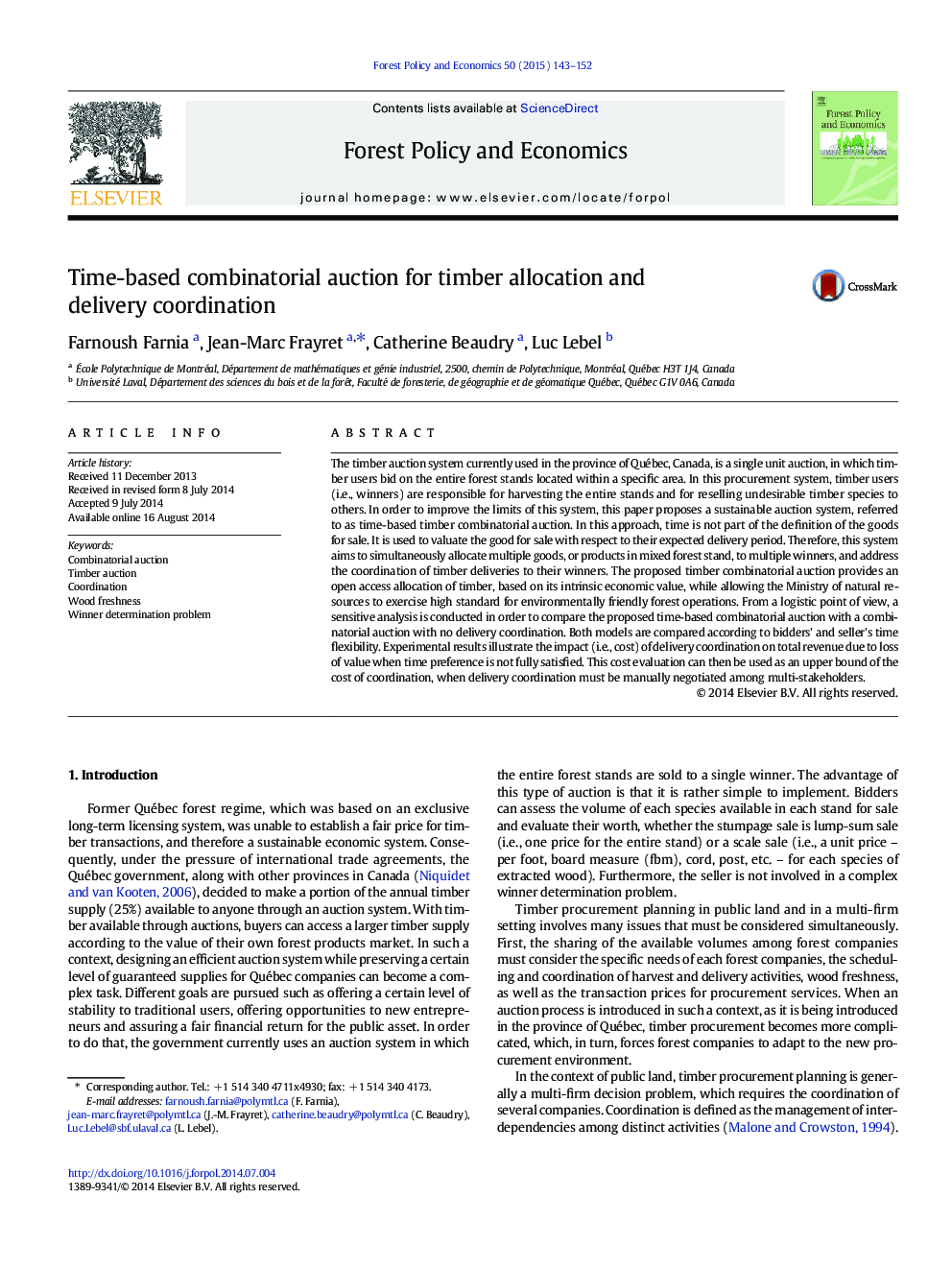| Article ID | Journal | Published Year | Pages | File Type |
|---|---|---|---|---|
| 6544938 | Forest Policy and Economics | 2015 | 10 Pages |
Abstract
The timber auction system currently used in the province of Québec, Canada, is a single unit auction, in which timber users bid on the entire forest stands located within a specific area. In this procurement system, timber users (i.e., winners) are responsible for harvesting the entire stands and for reselling undesirable timber species to others. In order to improve the limits of this system, this paper proposes a sustainable auction system, referred to as time-based timber combinatorial auction. In this approach, time is not part of the definition of the goods for sale. It is used to valuate the good for sale with respect to their expected delivery period. Therefore, this system aims to simultaneously allocate multiple goods, or products in mixed forest stand, to multiple winners, and address the coordination of timber deliveries to their winners. The proposed timber combinatorial auction provides an open access allocation of timber, based on its intrinsic economic value, while allowing the Ministry of natural resources to exercise high standard for environmentally friendly forest operations. From a logistic point of view, a sensitive analysis is conducted in order to compare the proposed time-based combinatorial auction with a combinatorial auction with no delivery coordination. Both models are compared according to bidders' and seller's time flexibility. Experimental results illustrate the impact (i.e., cost) of delivery coordination on total revenue due to loss of value when time preference is not fully satisfied. This cost evaluation can then be used as an upper bound of the cost of coordination, when delivery coordination must be manually negotiated among multi-stakeholders.
Related Topics
Life Sciences
Agricultural and Biological Sciences
Forestry
Authors
Farnoush Farnia, Jean-Marc Frayret, Catherine Beaudry, Luc Lebel,
